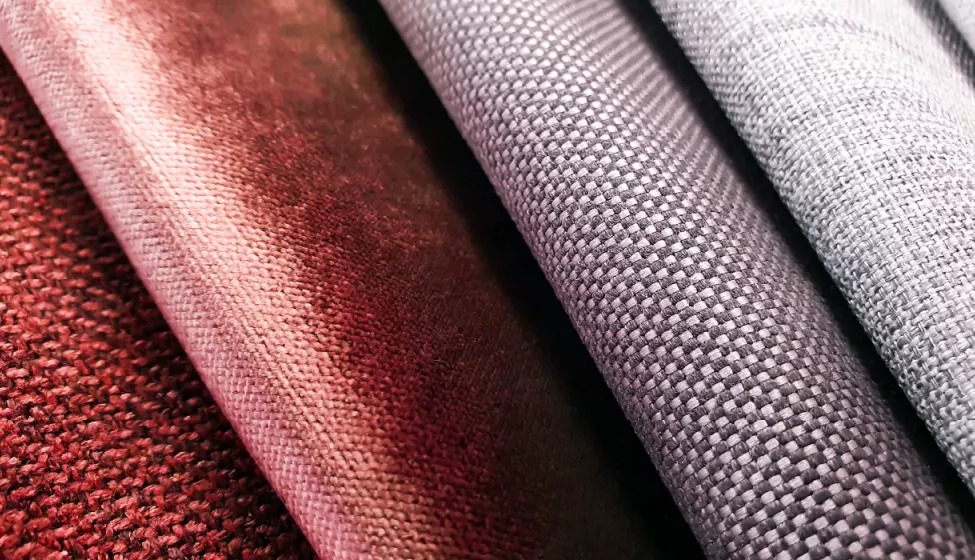January 20, 2021
Antimony trioxide newest chemical to be added to growing list of flame retardant bans
Yet another state has decided to ban certain flame retardants in selected consumer products. Massachusetts has decided to ban more than 10 brominated, chlorinated, or organophosphate-based compounds that provide flame retardancy to children's products, bedding, carpeting, residential upholstered furniture, and window treatments.
While other states have implemented similar bans or warning requirements targeting the same types of consumer products over the past decade (for example, TCEP, TDCPP, penta-BDE, TBBPA, and antimony trioxide are Proposition 65 listed chemicals), Massachusetts has expanded the number of listed flame retardants. Specifically, Massachusetts is the first state to explicitly ban antimony trioxide, chlorinated paraffins, and the organophosphate TCPP, as well as the brominated phthalate flame retardant TBPH and its analog, TBB, which have been used as replacement flame retardants for the previously banned penta-BDE, octa-BDE, and deca-BDE.
In New England, Maine and New Hampshire generically banned flamed retardant chemicals in selected consumer products defined as those chemicals that "resist or inhibit the spread of fire," but it is unclear whether these bans include synergists, such as antimony trioxide. Synergists are used in conjunction with flame retardants to increase their effectiveness; they do not have flame retardancy properties on their own. The California ban that became effective in January 2020 was the first to include the term "synergist" in the flame-retardant definition, but the Massachusetts ban is the first instance where antimony trioxide has been specifically identified by chemical name. This focus on antimony trioxide follows a 2018 decision by the U.S. National Toxicology Program to classify antimony trioxide as "reasonably anticipated to be a human carcinogen" and to add it to their carcinogen list.
The Massachusetts ban continues the trend of specifically targeting flame retardant use in children's products, bedding, and upholstered furniture, similar to other states. Only some flame retardants (e.g., penta-BDE, octa-BDE, TDCPP, and TCEP) have been completely banned from any product by selected states. Therefore, this ban not only continues the trajectory of increased regulations for the use of flame retardants but also increases the scrutiny on the use of antimony trioxide in selected consumer products.
Table 1 below lists the flame retardants banned in one or more states for use in some or all consumer products. Details of the Massachusetts ban and bans in other states can be found in Table 2 below.
How Exponent Can Help
Exponent's regulatory managers, health scientists, and materials and environmental engineers can help clients determine whether their consumer products may contain these chemicals, the necessary features they may provide, potential alternatives for achieving desired performance, methods for monitoring future production, and approaches for evaluating health and environmental concerns.
Table 1 — Flame retardants listed in state bans
Group | Flame Retardant | Specifically listed in state ban | Generically covered by state ban |
Brominated Flame Retardants | Penta-BDE | HI, IL, MA, MD, MI, MN, NY, OR, VT | CA, ME, NH, RI |
Octa-BDE | HI, IL, MA, MD, MN, NY, OR, VT | CA, ME, NH, RI | |
Deca-BDE | MN, OR, VT, WA | CA, ME, NH, RI | |
HBCD | MA, MN, WA | CA, ME, NH, RI | |
TBBPA | MA, WA | CA, ME, NH, RI | |
TPBH | MA | CA, ME, NH, RI | |
TBB | MA | CA, ME, NH, RI | |
Chlorinated Flame Retardants | Chlorinated paraffins | MA | CA, ME, NH, RI |
TCEP | MA, MD, MN, NY, VT, WA, Washington DC | CA, ME, NH, RI | |
TCPP | MA | CA, ME, NH, RI | |
TDCPP | MA, MD, MN, NY, VT, WA, Washington DC | CA, ME, NH, RI | |
Synergists | Antimony trioxide | MA | CA |
Table 2 — Details of state bans
State | Type of Product1 | Type of Flame Retardants2 | Concentration | Effective Date | Reference |
California | Children's products, mattresses, and upholstered furniture | All FRs | 1,000 ppm | January 1, 2020 | Assembly Bill 2998 |
Hawaii | Any product |
| 0.1% (1,000 ppm) | January 1, 2008 | HB 2013 |
Illinois | Any product |
| 0.1% (1,000 ppm) | January 1, 2006 | HB 2572 |
Maine | Any product |
| 0.1% (1,000 ppm) | January 1, 2006 | H.P. 1312 — L.D. 1790 |
Residential upholstered furniture | All FRs | 0.1% (1,000 ppm) | January 1, 2019 | H.P 138 — L.D. 182 | |
Maryland | Any new product |
| 0.1% (1,000 ppm) | October 1, 2008 | HB 83 |
Products for children less than 3 years old |
| 0.1% (1,000 ppm) | October 1, 2013 (TCEP) October 1, 2014 (TDCPP) | HB 99 and HB 299 | |
Massachusetts | Children's products, bedding, carpeting, residential upholstered furniture, and window treatments |
| 0.1% (1,000 ppm) | December 31, 2021 | H4900 |
Michigan | Any product |
| 0.1% (1,000 ppm) | June 1, 2006 | HB 4406 |
Minnesota | Any product |
| 0.1% (1,000 ppm) | January 1, 2008 | SF 2096 |
Children's products and residential upholstered furniture |
| 1,000 ppm | July 1, 2019 | SF 1215 | |
New Hampshire | Mattresses and upholstered furniture | All FRs | 0.1% (1,000 ppm) | January 1, 2021 | SB193 |
New York | Any product |
| 0.1% (1,000 ppm) | January 1, 2006 | S07621 |
Products for children 3 or under |
| Not specified | December 1, 2013 | S03703 A06195 | |
Oregon | Any product |
| 0.1% (1,000 ppm) | January 1, 2011 | SB 962 SB 596 |
Rhode Island | Residential upholstered bedding and furniture | Organohalogen FRs | 100 ppm | July 1, 2019 | H5082 |
Vermont | Any product |
| 0.1% (1,000 ppm) | July 1, 2010 | S81 |
Mattresses, upholstered furniture, plastic housing for TVs and computers, plastic shipping pallets |
| 0.1% (1,000 ppm) | July 1, 20103 | S81 | |
Children's product |
| 0.1% (1,000 ppm) | July 1, 2014 | S81 | |
Washington | Children's products and residential upholstered furniture |
| 1,000 ppm | July 1, 2017 | House Bill 2545 |
Washington | Children's product and residential upholstered furniture |
| 0.1% (1,000 ppm) | January 1, 2018 | B21-0143 |
Any product |
| 0.1% (1,000 ppm) | January 1, 2019 | B21-0143 |
1 Please note that there are often specific exemptions or product descriptors. Please see the original legal text for more information.
2 TCEP = tris(2-chloroethyl)phosphate CAS # 115-96-8
TCPP = tris(1-chloro-2-propyl)phosphate CAS # 13674-84-5
TDCPP = tris(1,3-dichloro-2-propyl)phosphate CAs # 13674-87-8
Penta-BDE = pentabromodiphenyl ether CAS # 32534-81-9
Octa-BDE = octabromodiphenyl ether CAS # 32536-52-0
Deca-BDE = decabromodiphenyl ether CAS # 1163-19-5
HBCD = hexabromocyclododecane CAS # 3194-55-6
TBBPA = tetrabromobisphenol A CAS # 79-94-7
TBPH = bis(2-ethylhexyl)-3,4,5,6- tetrabromophthalate CAS # 26040-51-7
TBB = 2-ethylhexyl-2,3,4,5-tetrabromobenzoate CAS # 183658-27-7
3July 1, 2012, for plastic housings for TVs and computers and July 1, 2013, for plastic shipping pallets.




